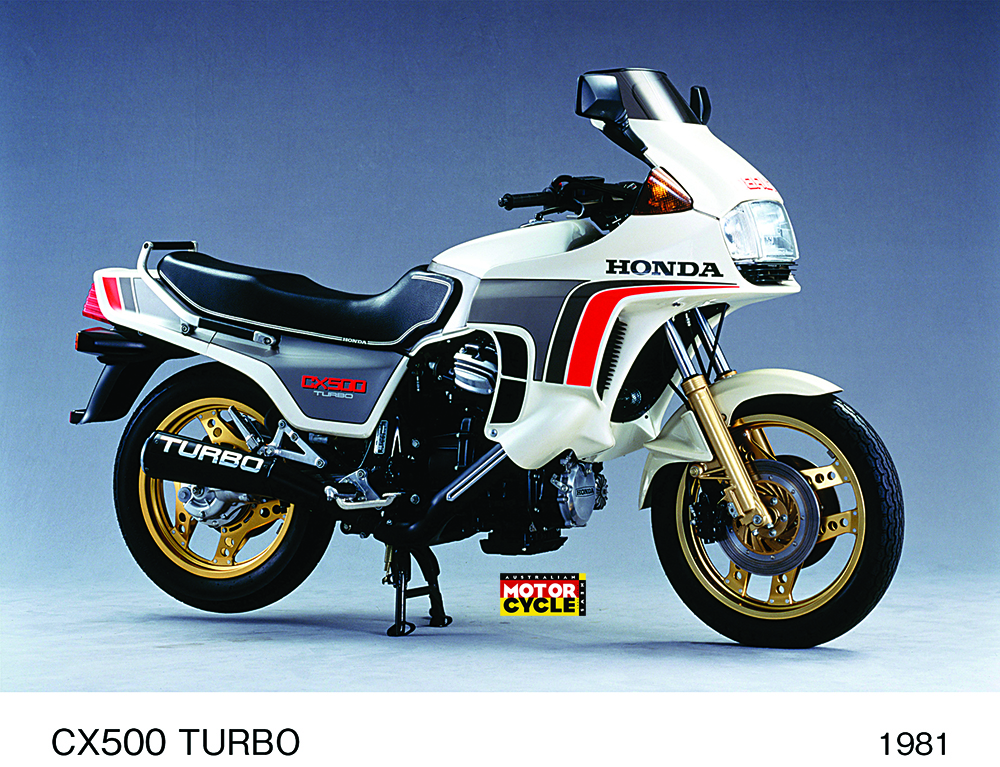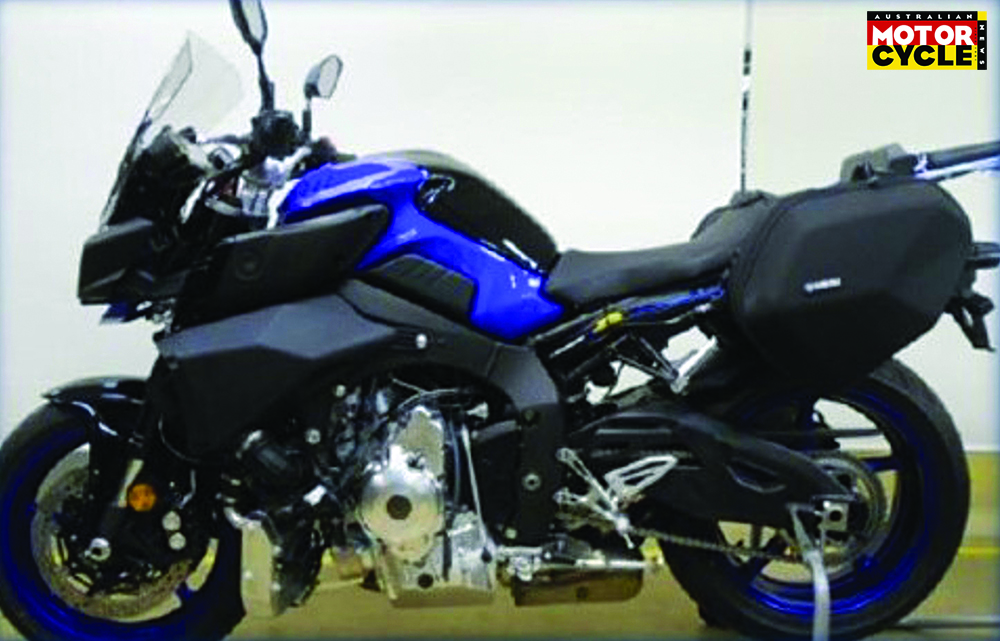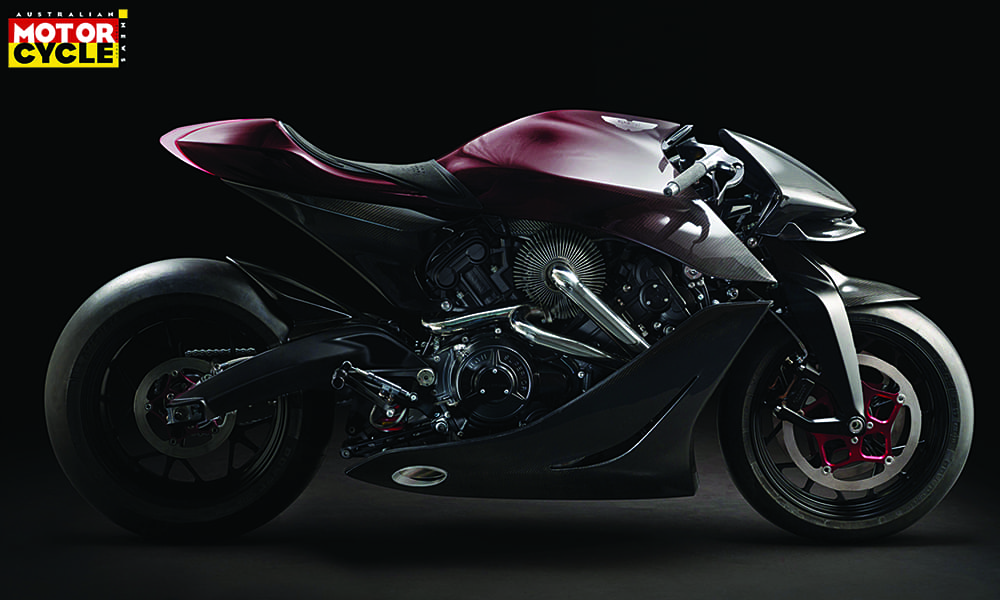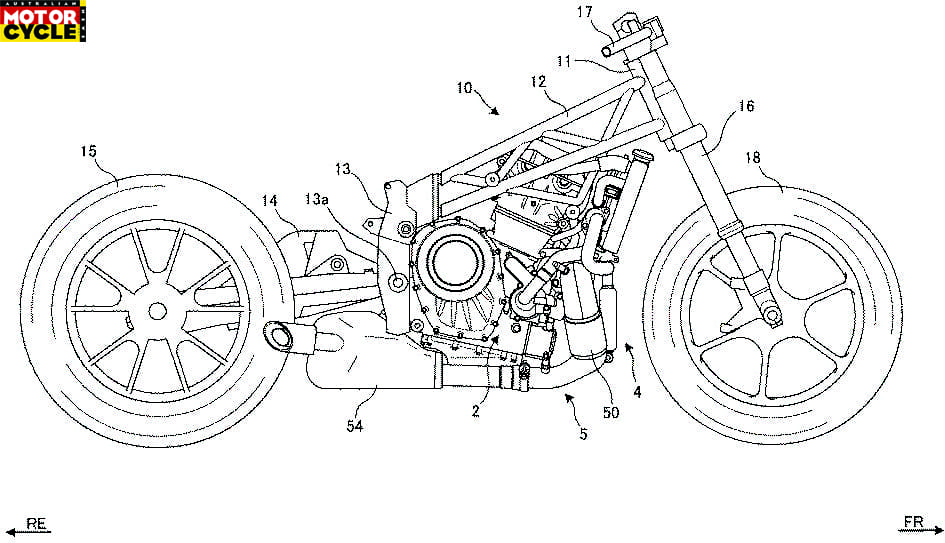Hang on, before we all go electric, the internal combustion engine still has a few surprises to spring
After more than a century of development, the internal combustion engine that forms the centrepiece of virtually every motorcycle is reaching its swansong. But before the technology bows out for good, we’re likely to see a generation of petrol-powered bikes that are more advanced than any before as companies strive to simultaneously reduce emissions and increase performance with turbo technology.
After years focussing on the development of Euro 5 compliant engines that meet the latest European emissions rules, which are widely mirrored by local regulations all over the globe, bike firms have a brief breathing space for the foreseeable future. The next set of emissions limits have yet to be set, or even widely discussed, so it will be years before they come into force. That means a period of stability is on the way, but manufacturers know that any new engines under development at the moment need to be prepared to be even cleaner than the current generation if they’re to live beyond the inevitable tightening of emissions limits that will come in a few years time.
While electric models are under development, the idea of battery-powered bikes that can match or beat the current combustion engine models in terms of out-and-out performance and range is still nearer fiction than fact. Hybrids – the stepping stone that car makers have opted for – are also in the works, but not the main focus of many mainstream bike companies. But another route that’s proved successful on four wheels as car makers try to balance the need for better emissions and economy with consumers’ demands for more performance, is forced induction. Largely taboo in motorcycle circles since the disastrous attempts at jumping on the turbo bandwagon in the 1980s, the idea of forced-induction motorcycles is starting to gain more traction.

Kawasaki has committed to forced induction with its supercharged H2 and H2R
40 years of progress
In the 1980s, turbos were all the rage in cars. Driven by development in Formula 1 racing where they exploited a loophole in the rules, which allowed 1.5-litre turbo engines to compete against 3-litre normally aspirated designs, turbo technology was improving at breakneck pace and proving that tiny engines could make mammoth power figures.
Turbocharged rally cars, sedans and sportscars followed, with performance spiralling out of control towards the mid-80s, when 1500cc F1 motors were hitting highs of as much as 1400hp in qualifying ‘grenade’ spec. Any bike firm was sure to be interested in getting some of that action, and soon all four Japanese brands were beavering away on boosted bikes with the hope of getting big power from a small package. Honda even tried to mimic the turbo’s F1 success by making an oval-pistoned V-twin – the NR250 – by bolting two tiny blowers to a motor that was basically half the ill-fated NR500’s V4 in the mid-80s. It never saw the track.
The problem with those 80s turbo bikes was inevitably the same: turbo lag. Turbos of the era were designed with cars in mind, with insensitive foot-operated throttles and heavy flywheels, and even then, turbo lag was often a problem on four wheels. Apply a turbo to a bike, with a quick-revving engine, a sensitive hand-operated throttle and a skinny sliver of 1980s-spec rubber to put the power to the ground and it was a recipe for disaster – and that was before we even get into the issue of the era’s flexible steel frames and spindly suspension parts. Worse still, to cope with the extra mixture that would be introduced to the cylinders under boost, turbo engines needed low-compression ratios, making them limp and lethargic when the turbo wasn’t blowing and serving to emphasise the difference between on- and off-boost performance.
Such was the backlash, for decades it’s been widely accepted bikes and turbos simply don’t mix. Now, though, that’s not necessarily true. Smaller, more efficient car engines have led to the development of tiny, lightweight turbochargers that are easier to spin-up than their forebears, and allied to modern electronic engine management, the development of low-pressure turbocharging on engines with relatively high compression ratios, and ride-by-wire throttles, the old problem of lag simply isn’t the issue that it was in the 1980s.

In 1982 Honda showed off its CX 500 Turbo
Yamaha’s proves the potential
The Japanese manufacturers are split over forced induction. All are working on the idea but there’s no clear consensus when it comes to the choice of exhaust-driven turbochargers or engine-driven superchargers.
Kawasaki is clearly ahead of the game, already selling a range of supercharged H2 models using its own in-house-designed, engine-driven centrifugal superchargers. Honda has yet to officially show any boosted bikes but has been developing its own supercharged machines, focussing on designs with positive-displacement superchargers, quite different to Kawasaki’s thinking.
On the other side of the fence we have Suzuki, which has been a vocal proponent of exhaust-driven turbos, and Yamaha. Despite the fact Suzuki has been working on a turbocharged middleweight twin for approaching a decade, and recently admitted that a turbo version of the Hayabusa reached prototype stage before being dropped in favour of an updated version of the normally aspirated model, Yamaha may actually be at the front of the pack when it comes to development.
Late last year, the company quietly revealed details of its three-cylinder turbocharged testbed; a bike built with an eye to potential future emissions regulations, exploring how performance can continue to be increased even under the strictest imaginable pollution limits. The results of applying modern turbo technologies to motorcycles were eye-opening, to say the least.
The Yamaha testbed was built around a purpose-made 847.5cc three-cylinder engine that, despite a similar capacity to the MT-09 triple, shares nothing with that motor. The prototype’s bore and stroke – 73mm by 67.5mm – are totally different to the much more over-square MT-09’s 78mm by 59.1mm figures. As befits a turbo engine, the compression ratio was also lowered to 10:1 (11.5:1 on an MT-09), and once again Yamaha followed car trends by equipping the design with variable valve timing for both the intake and exhaust, albeit without going as far as using variable valve lift. Direct gasoline injection (DGI) was also used, squirting fuel straight into the combustion chamber at a massive 200 bars of pressure.

Suzuki XE7 engine
While nothing like any production bike engine, the specs read remarkably like those of a modern high-performance car. That’s no coincidence, as car emission limits clearly show the way for motorcycles of the future, and by allowing car makers to do the heavy lifting when it comes to developing technologies and materials, bike companies can jump on board later without incurring the same hefty R&D costs that would then be passed on to customers.
For its prototype, Yamaha bolted the engine to the chassis of an MT-10, and while the project isn’t intended to be a direct precursor to a production model, that gives us a good comparator when it comes to performance and weight. The turbo triple bike weighed in at 230kg wet, around 20kg more than a stock MT-10. Not bad, given the extra torque that the turbo engine offers, and it’s clear that a purpose-made turbo bike, rather than one borrowing an existing frame, could be made lighter still if required.
When it comes to performance, the turbo prototype achieved a peak power of 132kW (180hp) at 8500rpm. Not the sort of jaw-dropping power that might be associated with turbo drag bikes, and an indication that the boost levels are kept relatively sane to reduce turbo lag.
The torque figure was more impressive, though, with the bike hitting a peak of 175Nm at 6000rpm but plateauing above 170Nm all the way from 3000rpm to 7000rpm.
All that went through a conventional, quickshifted six-speed transmission, geared for the usual 300km/h top speed at around 9500rpm.
So, performance that’s better than you’ll get from a non-turbo bike of the same size, but not the jaw-dropping figures that you might associate from adding lots of boost. That’s because the really impressive results came from the prototype’s emissions performance.

Yamaha’s 847.5cc turbocharged triple test mule
Clean as a whistle
Under the standardised World Motorcycle Test Cycle (WMTC), Yamaha’s prototype managed 92g/km of CO2. For context, BMW’s R 1250 GS – the perennial best-seller in Europe – makes nothing like as much power or torque from its 1254cc twin, but pumps out 110g/km CO2 under WMTC. For something with more comparable performance, how about BMW’s S 1000 R? That puts out 144g/km.
Compared to the existing Euro 5 emissions limits, the Yamaha prototype’s other emissions were also remarkably low, with less than 20 per cent of the permitted levels of carbon monoxide and 50 per cent of the allowed NOx. Hydrocarbon limits, and particularly restrictions on non-methane hydrocarbons, have been among the toughest element of Euro 5 for bike firms to comply with, yet the Yamaha prototype only emits around 40 percent of the permitted levels.
All in all, it’s a solution that appears to offer vast environmental and performance benefits over current motorcycle technology, all by using proven ideas that have already reached mass-production in cars.

What about the lag?
As suspected, the vast development of turbo and electronics technology since the 1980s means it’s nothing like the issue it used to be. Yamaha found that with some careful mapping of the ride-by-wire throttles, ignition, and the direct injection, it could make the engine respond almost instantly. Snapping the throttle open at 3000rpm showed it took less than 0.1 of a second before a significant increase in torque, and within 1.03 seconds the bike was putting out more than 90 percent of its maximum torque. Given that max torque is 175Nm, that means it only took around a second to go from zero to 157.5Nm (in comparison, a Yamaha MT-10 manages a peak of 111Nm at 9000rpm, a figure the turbo prototype would hit well under a second after opening the throttle at a third of that engine speed).
Of course, the Yamaha machine is a testbed, not a prototype that’s heading for production, but the results it has achieved must go a long way to encourage Yamaha in the direction of turbos as it looks to the future. Notably, the firm has also patented designs for a smaller parallel-twin turbo bike with a similar layout, likely to be around the 700cc mark.

A lot has changed since Yamaha’s 650 turbo of 1981
Suzuki Recursion
Like the more recent Yamaha project, Suzuki’s Recursion project targeted emissions and economy above out-and-out performance, claiming 100hp from a 588cc turbocharged, intercooled parallel twin. The project evolved into the XE7 engine prototype two years later, looking much closer to production-readiness. The XE7 grew to around 700cc and gained a DOHC head instead of the original SOHC design, suggesting higher-performance targets, but after being shown in 2015, the project disappeared from sight.
Since then, a steady stream of patent applications from Suzuki has shown that the idea is still developing, growing into a bike with quite a different layout and design compared to the original Recursion concept.

Honda supercharged Africa Twin
Honda might have led the way in the original turbo motorcycle era with the CX500 Turbo and aborted plans for a smaller VT250 Turbo, but its attentions have firmly turned to supercharging for the next-generation of forced-induction machines.
While the company hasn’t shown prototypes or gone on the record about its plans, several supercharged machines have appeared in patents over the last couple of years, most notably a detailed design based around the Africa Twin’s 1084cc parallel twin.
Unlike Kawasaki’s supercharged H2 models, which use centrifugal superchargers that increase boost as engine revs rise, Honda’s designs have all used positive-displacement blowers that maintain relatively constant levels of boost all the way from idle to the redline.
The difference is that centrifugal superchargers work a bit like fans, blowing harder the faster they spin, while positive-displacement designs are more akin to pumps, moving a fixed volume of air with each revolution. For a bike like an Africa Twin, the low-end torque that a positive-displacement supercharger can provide would be more useful than the higher peak power that a centrifugal supercharger or a turbocharger might offer.

Smaller supercharged Kawasaki
Kawasaki has been hard at work developing its supercharged H2 range over the last few years, however, the company has always been open that it has wider plans for the technology.
Back in 2015, Kawasaki’s ‘Soul Charger’ and ‘Spirit Charger’ design sketches – a supercharged nakedbike and a half-faired, smaller-looking design respectively – hinted at the firm’s future plans. The Soul Charger has arguably evolved into the Z H2, albeit with a modern style instead of the retro look of the original sketch. Could the Spirit Charger yet turn into a smaller boosted bike? Kawasaki is also working hard on hybrid technology at the moment, so an emissions-busting, boosted-and-hybrid machine might yet be its solution to future emissions limits.

Aston Martin AMB 001
Even small-scale companies are looking to forced-induction and the Aston Martin AMB 001 looks to provide a handful of well-heeled customers the chance to get a boosted bike to sit alongside their supercars.
Limited to a production run of 100, the AMB 001 is a joint project with the latest iteration of Brough Superior – a brand that’s now part of French designer Thierry Henriette’s stable, alongside his long-running Boxer Design concern, which itself has spawned desirable machines including the Voxan-powered Boxer VB1 from 20 years ago.
The firm claims 134kW from a turbocharged version of Brough’s 997cc V-twin, with a variable-geometry turbo that uses a low inertia turbine to reduce lag.

Benda VTR-300 Turbo
One of the more intriguing turbo projects underway at the moment is new Chinese brand Benda promising a ‘VTR-300 Turbo’ sportsbike. The firm already has a 298cc V-twin engine, a water-cooled, DOHC design used in its BD300 bobber, and has recently expanded to start international sales, initially with a dealer network in Italy. Confirmed future models also include the BD700 – a 680cc inline-four cylinder with crazy concept bike styling. Whether the VTR-300 Turbo uses a boosted version of the BD300’s twin or has an all-new unit of its own, it promises to be the first sub-500cc turbocharged production bike the world has ever seen.

Honda supercharged V-twin
Another supercharged Honda project, seen in 2016 patents, is this blown V-twin. Like the Africa Twin designs, it uses a positive-displacement blower, but this time bolted between the cylinders of a 90-degree V-twin. While the patent documents don’t reveal details of the bike’s performance or size, it looks like a smaller displacement machine with the engine acting as a structural part of the chassis to keep weight to a minimum. The relatively small, SOHC design suggests that out-and-out performance isn’t the idea, instead the boost is to allow a small-capacity, low revving engine that’s tailored for minimal emissions to simply match the power and torque demands from customers without vast increases in manufacturing cost.

Suzuki Hayabusa turbo prototype
It might not have reached production, but Suzuki has confirmed that it developed and tested a turbocharged Hayabusa in the development of the revamped 2021 model. The bike missed the cut because Suzuki found it could update the old Busa engine to meet Euro-5 emissions limits without losing performance, but as and when another new generation of pollution restrictions come into force, Suzuki will be well-placed to reuse that turbo Busa research.

Future restrictions
The emissions limits that currently form the basis of most motorcycle design are the Euro 5 standards developed by the United Nations Economic Commission for Europe, which are widely mirrored in local legislation elsewhere.
Countries including Japan and India have effectively aligned their own limits with Euro ones, and even China is largely following suit. Euro 5 came into full force in Europe on 1 January this year, which means all eyes are now on what the regulations will evolve into when they’re next reviewed. Although the Euro 6 motorcycle rules haven’t even been discussed yet, they’re likely to fall into line with planned Euro 7 car limits (confusingly, motorcycle emission limits are one number behind their four-wheeled equivalents; cars sold in Europe already have to meet their own Euro 6 emissions standards that are basically the same as the two-wheeled Euro 5 ones).
The Euro 7 car rules, under development at the moment and expected to be introduced in 2025, are likely to be the last before internal-combustion powered cars are banned from sale altogether in Europe. The Euro 6 rules for bikes are likely to come into force in the late 2020s, and it’s at this stage that technology like turbos, superchargers, variable valve timing and direct fuel injection will become vastly more important for any company still hoping to squeeze more from petrol power units.

Ben Purvis